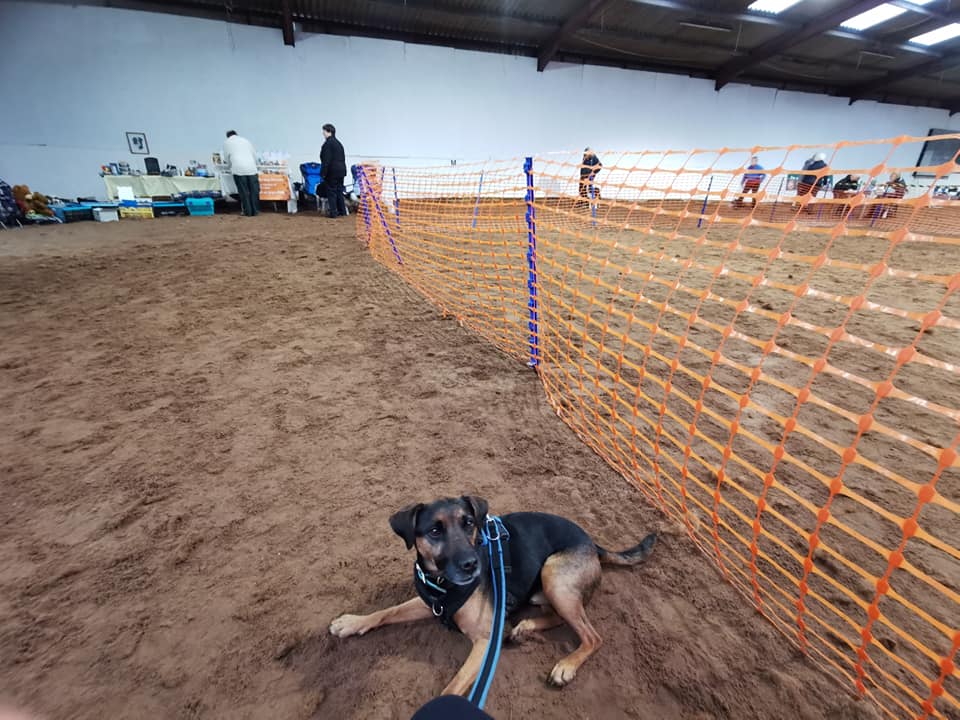Handling Reactive Dogs Is Hard
There is so much to remember, how to hold the lead, when to feed, keeping an eye on everything including having eyes in the back of your head! Just trying to figure out what to do with your end of the lead is hard enough without fighting what the world throws at you on your walks and the dreaded “he’s only friendly!” That’s on top of trying to find time to fit training into your day to day life (I’ve written more on this HERE if you would like to read my top tips for fitting the training in).
However, there is no need to despair. There are a number of things you can do to help and learning how to handle your dog in ways that can maximise your confidence is the best place to start.

By having the dog positioned just in front of you, you can clearly see your dog and the environment without having to change where you look.
Thinking About Positioning
By having a think about your positioning there is a lot we can do to improve your confidence.
Many owners, understandably, try to block their dog’s visual access to other dogs by standing in front of their dog with their back to the other dog. However, this actually leaves you more vulnerable when out walking with your dog. If the other dog that you have your back to does something you aren’t prepared for, or if another dog enters the environment then you can’t act quickly in response to these changes because you can’t see the other dog.
In addition to this, often we keep our dogs very close to our legs. Again, this is understandable because we want to keep our dogs close and under control. But this can mean that we have to look down at our dog which again leaves us vulnerable to not noticing what is going on in the environment around us.
Have Your Dog Just In Front Of You
By having your dog just in front of you, you are able to keep an eye on your dog and the environment without making yourself vulnerable. Grisha Stewart demonstrates this positioning perfectly in Behaviour Adjustment Training. You can view an example of this HERE.
Give this a go with your reactive dog. Comment below to let us know how you got on with it!
